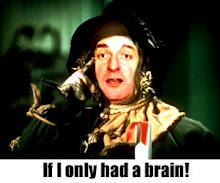Why is Poor Peg Poor?
'Willy Reilly and his Colleen Bawn' is no masterpiece. 'Caligari' it is not. McDonagh, the director, is no D.W. Griffith. The best things that can be said about this early Irish 'classic' is its innovative interweaving of credits and action and the use of a 'false flashback' a full thirty years before Hitchcock's 'Stage Struck' (when Red Rapparee recounts his false conspiracy with brave Willy). That said it's all pretty ludicrous melodrama, though not without some hammy pleasures (when the hero is imprisoned one is tempted to cry 'Free Willy!').
At one point in the movie, Willy, on the run, takes refuge with his poor tenant, Peg Finnegan. I asked myself, given that she is his tenant, why is poor Peg Finnegan poor? Yes, the film is set in the 18th century, but it was filmed in 1918, 5 years after Big Jim Larkin fought against the Lock Out, and two years after James Connolly fought for a fairer Ireland. What struck me about 'Willy' (and, if I'm truthful, about the bonds short shown with it) was the middleclass snobbery of it all. Granted the film had to appease the British if it was to be shown, it nevertheless shows there to be little difference between the two religious factions involved, at the appropriate economic level that is. Religion masked in Ireland what became a neurosis in Britain, namely class.
The screening, in Meeting House Square, was accompanied by a live performance of a score by Bernard O'Reilly. That was excellent. Sentimental true, but what else would you have for such a movie.
The movie was shot in Rathfarnham on the site of Padraig Pearse's school, St Enda's, so the director took the opportunity to shoot a short promoting the buying of bonds in support of the fledgling Dail. This was also screened. Michael Collins, hale, hearthy and laughing, dispenses the bonds as a veritable who's who of widows and families of the 1916 martyrs pay their few bob. Arthur Griffith and other luminaries of the Nationalist scene also make appearances. Few in the audience would deny a certain thrill watching the otherwise dull footage.
Interesting then. More fun was the chatting with Janet and a friend of her's, Brian, both actors. Truely there is literary ore to be mined in the acting profession, not least because, given that shows are so finite, a lot of behaviour that would not be tolerated in a normal workplace, is borne for the sake of the show. It can't be healthy, but it's fun to look at.


0 Comments:
Post a Comment
<< Home